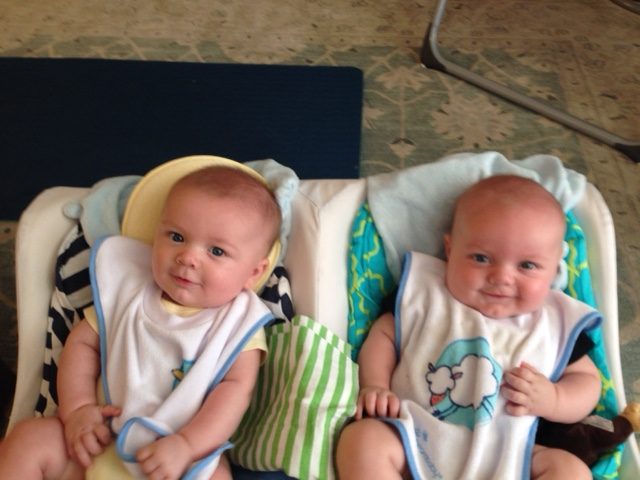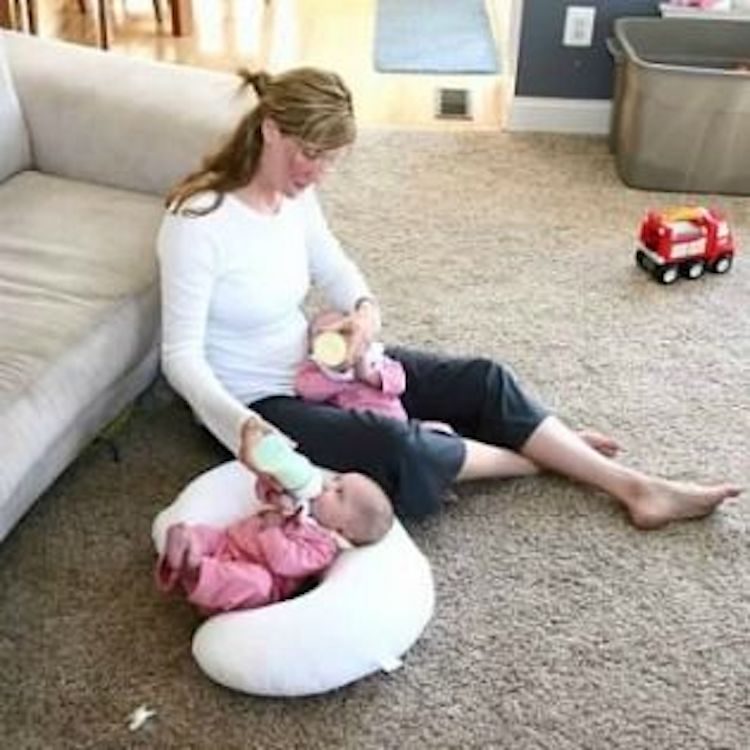So You’re Having Twins! Proven Support and Fun Facts
Updated October 1, 2025 – Every first-time parent has questions, and for expecting parents of twins, the need for information can feel…well, doubled. In this guide, So You’re Having Twins! Proven Support and Fun Facts, you’ll learn how to book in-home twin care classes, get answers to common parent FAQs, and discover some fascinating twin trivia along the way. The goal is simple: to help you feel confident and supported when your newborns arrive.
So You’re Having Twins! Proven Support: In-Home or Virtual Education for the Whole Family
If you’re wondering how to feed both babies at the same time, what gear you actually need, or how to get twins on the same schedule, this Twins Baby Basics class is designed for you. Our Nurses and Night Nannies come to your home to share practical tips, hands-on techniques, and reassurance so you can care for your twins with confidence. Virtual classes are also available if you prefer, or live outside our service areas.
What You’ll Learn in a Twin Care Class
- Safe sleep practices and minimizing the risk of SIDS for twins and triplets
Many parents ask if twins can sleep together since they were in the womb together. We’ll explain why separate cribs is safest, and more about how to set up safe sleep environments that still keep babies close for convenience. Read 10 Steps to Safe Sleep for Baby for more info. - Tandem feeding and practical positioning tips
Learning to feed both babies at once is a sanity-saver. You’ll practice hands-on techniques with pillows and supportive positions, whether you’re bottle-feeding or nursing. These strategies mean you can actually rest between feeds instead of being in a 24-hour feeding loop. - Getting twins on the same schedule using natural feeding rhythms
Feeding is the anchor of a baby’s schedule. We’ll show you how this works naturally so naps and bedtime fall into place together without rigid “sleep training.” - Diapering, swaddling, and soothing strategies that actually work
Double the diapers, double the cries can feel overwhelming. You’ll learn calming techniques and time-saving diaper hacks that parents of twins swear by. - The best gear for twins (and what’s not worth the hype)
From double strollers to twin bassinets, we’ll help you figure out what’s worth investing in and what’s just clever marketing. If there are older siblings, we also share tips for Toys Siblings Can Play with Together! - What parents can expect in the postpartum phase
Recovering from birth, handling visitors and balancing your own sleep looks very different when you have newborn twins. We’ll cover what’s realistic, how to ask for help, and how to set boundaries early. - Setting up the nursery for multiples
Simple changes—like two diapering stations or organizing clothes by size and season—save hours of frustration in the first months. A little prep goes a long way. Our Essential Guide: How To Prepare Your Home for a Newborn can give you a head start on prepping the house and the nursery.
Your nurse also stays on call once your babies arrive, available by text or phone to answer your questions as you adjust to life with twins. You can schedule a Twins Visit here.

So You’re Having Twins! Parent FAQs Answered
How do you get twins on the same sleep schedule?
Feeding is the anchor to a baby’s schedule. In the early days, newborns feed on demand. Soon enough, feeds stretch to 2 hours, then 3, then 4. When twins are fed at the same time, their bodies sync, which naturally leads to naps and sleep lining up too. After a few days of offering milk at the same time, many parents are surprised at how quickly “hungry times” and nap times align.
A funny side effect: parents of older twins often say potty training is extra tough because both toddlers need the potty at the same time. Years of synced eating and sleeping leads to synced bathroom schedules too!
Feeding infant twins at the same time
It’s inevitable that one baby will cry while you’re tending to the other. To minimize stress, get used to feeding both at once. For bottle-feeding, this often means using supportive pillows to free up your hands. If you’re breastfeeding, tandem nursing in the football hold allows both twins to latch comfortably while you can burp one without disturbing the other. Keeping two bassinets or sleepers next to your bed makes nighttime feeds easier. It takes practice, but you and the babies will find your rhythm quickly.
How often should I expect to feed twins?
Most twin parents find their babies need to eat about every 2 hours, especially in the first weeks. Remember that twins are usually born premature which means that are smaller than full term babies. Some preemies may need gentle waking for feeds, since they can be sleepy. Other newborns might wake to feed every 2 hours or more simply because their stomachs are so small. Don’t let even the tiniest bottle fool you- learn about how much to feed in How big is a newborn’s stomach?
Should twins share a crib?
The American Academy of Pediatrics advises against co-bedding. Twins should each sleep on their own flat, firm surface, free of pillows, blankets, or toys. However, awake time together can be beneficial, especially for preemies. Studies show premature twins sometimes help regulate each other’s heart rate and breathing. Think of togetherness as something to offer while awake and supervised, but sleep as a time for safe separation.
How do parents get sleep when they have newborn twins?
It’s crucial that parents of twins have a “sleep plan” in place before the babies arrive. Swap nights, or even half nights caring for the twins with your partner, even if it means sleeping in separate bedrooms. It may take a week or more before you are both comfortable solo-parenting the twins but allowing each other time to sleep will keep you both healthy and energized. Here are more Sleep Hacks: 4 Tips to Maximize New Parents’ Sleep
Accept help from family and friends. If funds allow, hire a night nanny who specializes in twins to allow you to recuperate and catch up on sleep. You might also consider a night doula fund on your baby registry if you’re expecting twins.

If your newborns or infants need to be soothed at the same time, try one of the 12 Ways to Soothe Baby. This is where the baby carrier comes in handy…wear one twin while holding the other!
So You’re Having Twins! Bonus Tips and Tricks
How do I keep from mixing up my identical twins?
Hospitals usually place “Baby A” and “Baby B” hats on newborns, but those get small quickly. Parents use tricks like painting a toenail with non-toxic polish, dressing each twin in “assigned” colors, or marking a hand with a safe marker. Over time, subtle differences in appearance and personality make it easier.
What’s the must-have product for parents of multiples?
A carrier. Whether it’s a Baby Bjorn, wrap, or twin-specific sling, having a way to wear one baby while tending to the other gives you freedom and keeps everyone soothed. Babies thrive when held close, and hands-free time is invaluable for parents.
How many diapers do I really need?
Newborns go through about 10 diapers a day. For twins, that’s 20 changes every 24 hours. In the first three months, expect to use about 1,500 diapers—yes, one thousand five hundred. Stocking up in multiple sizes ahead of time saves you midnight store runs.
A pro tip: make a grocery list of your family’s top 20 essentials. When friends or relatives ask how they can help, hand them the list. They can check what you need and do a store run for you, saving you time and energy.
What kind of social support is there for parents of twins?
In addition to local Facebook groups for parents of twins and higher order multiples, Multiples of America will help you find other twins families in your area. In addition to fellowship, these groups often have consignment sales where you can buy gently used gear and clothing.
So You’re Having Twins! Fun Facts
Parents of multiples often hear the same questions: “Are they identical?” “Do twins run in your family?” or the blunt “Were they natural?” Beyond those, here are some fascinating twin facts:
What are mirror twins?
About 23% of identical twins are “mirror twins,” meaning the egg split later than usual, around days 8–12 of fertilization. These twins may have opposite dominant hands, mirrored hair whorls or even reversed dental patterns.
Do twins have the same fingerprints?
No. Fingerprints do start as identical ridge patterns, but differences in pressure and hand movement while in the womb create unique prints. Twins’ prints are similar, but never identical.
What is cryptophasia?
Cryptophasia is a private language sometimes developed by twins, understood only by them. It often appears during early language stages when twins spend so much time together. While charming and sometimes baffling to outsiders, most twins also develop regular speech on track.
If you’re expecting twins or higher order multiples remember that while it may be exhausting at first, there are many supports available to you. Having a plan in place for care of the babies as well as your own sleep and recovery will benefit all of you!

Categories
- Corporate Care & Partners
- COVID19 Archive
- En Espanol
- Expert Guides
- Hiring a Night Nanny
- Infant Safety
- Infant Sleep Hub
- Newborn Care
- Postpartum Health
- Twins & Multiples
- Work as a Night Doula
- zPost Archives
